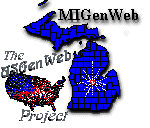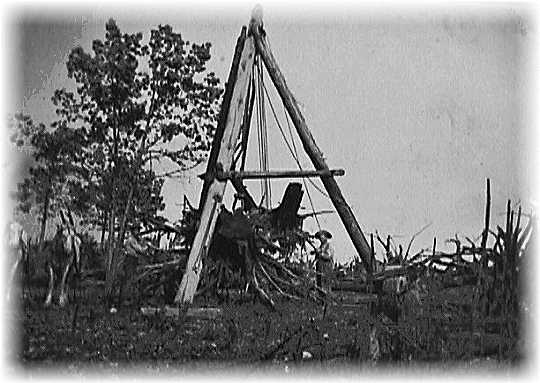 | Gratiot County Michigan MIGenWeb Project |
 | Gratiot County Michigan MIGenWeb Project |

The Internet continues to change virtually everything we do, from how we communicate with one another to how we access our libraries, and recently, to how we can learn about our ancestors.
For those who have already been involved in genealogical research, the slow, methodic pace of archive research, the time spent traveling to large libraries with resources, the expenses incurred from various subscriptions, and the missing links that continually turn up in one's family tree are well-known experiences.
But largely because of an expanding project called GenWeb, the Internet is opening doors and creating opportunities in genealogy that in some cases launch people further along in their research in a matter of minutes than all they accomplished in years of prior research.
Pat Hamp of Elwell is an example of how the Internet helped more than anything else she had used. Through her personal computer, Hamp said, she was able to contact someone in Cornwall, England, and find a cousin who provided her with a treasure of family history and background.
"She almost gave me 200 years worth of information," Hamp said.
Donna Hoff-Grambau of the Weidman area also said she has had experiences on the Internet in which she has received more information about her family ancestry in a few moments than what she could have discovered in years of library research.
Both Hoff-Grambau and Hamp maintain sites on the World Wide Web for the USGenWeb project, a national effort to create a global library for genealogical research.
The project is working toward having each county in each state maintain a Web page where Internet users can find resources, information and links to other genealogical Web pages. Michigan has all of its counties participating.
Hoff-Grambau maintains the IsabellaCounty site, and Hamp maintains the Gratiot County site, responsibilities they enjoy, but which forced them to learn a lot about the Internet and the programs used to create the millions of sites a Net surfer can find.
Hamp said she had been involved in genealogy already, but her research began to pile up.
"The papers started piling up and that's when I decided to get a computer," she said.
While her initial reason for the computer was to help her maintain her files, it allowed her access to the Internet for the first time.
"My hard drive got loaded up fast," Hamp said.
Hoff-Grambau also said the Internet helped her immensely with her research, despite the fact she lives in a rural area. She said she had lived in more metropolitan areas, which had large libraries with vast resources.
But eight years ago, after moving to the Weidman area, she got online to fill that need for resource accessibility.
"I used to spend $200 to $300 in magazine subscriptions just to keep up," she said. "But with the Internet, you can find anything."
Logging on to the GenWeb site at http://ww.usgenweb.com a user can start by going to the state of choice. A user might know that his grandmother was born in Rochester, N.Y By clicking on Monroe County in New York, then looking up a names list, a user may find the grandmother's name. The next step is to contact via email to the person who posted the information to see what else they know.
Maintaining those individual county Web sites initially takes a lot of work and cooperation with other genealogists, but Hoff-Grambau said the people you meet online are generally more than willing to help out.
"They're willing to help you look up something because they know they are more than likely able to get some help from you," she said.
To put up the Isabella County site - which she expects to be operational soon - Hoff-Grambau said she's had to learn a lot.
What I've done is I've actually learned the history of Isabella County," she said. Both she and Hamp needed to learn the computer language used to create a homepage - hypertext markup language or html.
And other bits of information turn up as well in the research process. For example, Hoff-Grambau said she learned that Scots follow specific patterns when naming their children. Knowing that can help a researcher speed up the family tracing.
"The first son is named after the father's father, and the second son is named after the mother's father," she said. "The first daughter is named after the mother's mother and the second daughter is named after the father's mother."
The GenWeb also provides links to other genealogical sites with a wealth of information. At http:flwww.ancestry.com a user can look up the Social Security Death Index.
Another good site for those researching their family history is at http://www.oz.net/cyndihow/sites.htm.
There are mailing lists as well, where people can post questions regarding obstacles in their research. The posts are read by others doing similar research, who just might have the answer.
Hoff-Grambau said it was through a mailing list that she located a researcher who was able to trace one of her ancestral lines back to 1540.
But why bother to do all of this?
"I'm a firm believer that it is the participation of the common person that makes history," Hoff-Grambau said, "George Washington couldn't have done it all by himself"
Through genealogy, a person can learn not only who begat whom, but some of the stories about their ancestors, the places they lived and the things they accomplished.
So regardless of your Internet expertise, now may be the time to put the
technology of the present to work to find out about your family's past.